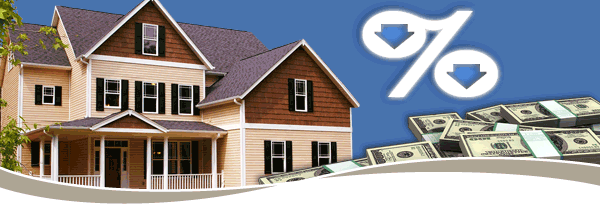|
||||||||||||||||||||||||||||||||||||||||||||||||||||
|
||||||||||||||||||||||||||||||||||||||||||||||||||||
|
Friday, April 26, 2013
Mortgage Rates Hit All Time Low for 2013 This Week
Monday, April 22, 2013
S&P Signals Why the Housing Recovery is Underway - Why?
After what it called years of tenuous signals indicating that the housing recovery was underway Standard & Poor's (S&P) Ratings Service say this time it is different Why is this time different? Roundtable participants said the most critical factor is the 6.8 national increase in home prices in 2012. S&P projects that prices will increase another 8 percent this year.
"Rising prices are a good cure for a lot of headaches," Erkan Erturk, a senior director in S&P's Structured Finance Research Group said. "Prices also provide a good summary of the broader housing market.
Erturk said the housing market recovery has positive implications for the economy, consumers, and local governments as sources of tax revenue. Robust sales, falling if still elevated mortgage delinquency rates and foreclosure sales and increasing residential homebuilding are all key indicators that the sector is rebounding.
"There were a few false recoveries in 2010, driven by tax credits and other government supports," Erturk said. The housing market had bounced around the bottom for several years, but a recovery began shaping up in late 2011 into 2012. "2012 was a significant year - the recovery was strong, and the turnaround came faster than we'd anticipated."
Other positive signs include the shadow inventory which is diminishing because of rising home prices which are also pushing about two million homeowners into positive home equity positions. Still, affordability remains high for would-be-homeowners.
Despite these improving indicators Erturk said a full recovery will require correction of regional and national imbalances such as the existing 40 percent gap between new and existing median home prices. "In the long run," he said, "we would need to see existing median home prices rise to be consistent with historical 20 percent levels."
Government intervention such as Federal Reserve purchases of mortgage-backed securities (MBS) continue to cause distortions. "So you could argue if the support disappeared, the market couldn't sustain the recovery," Erturk said.
Saturday, April 20, 2013
California Home Prices Surge 8.3% in March
The median price of a home in California shot up in March to $313,000 from 289,000 in February, a one-month increase of 8.3 percent. The spike put the median price 24.7 percent above the price in March 2012, the 13th consecutive annual price increase. California prices peaked at a median of $484,000 in the late spring/early summer of 2007 and hit a low of $221,000 in April 2009.
Sales of new and existing single-family houses and condos increased 31.5 percent from February; 37,764 transactions as compared to 28,719. DataQuick, which supplied today's data, said it is normal for sales to shoot up between February and March and it appears the March 2013 figures are not extraordinary. March sales in California have ranged from a low of 24, 565 in 2008 to 68,848 in 2005 and have averaged 43,648 since DataQuick began collecting data in 1988. The recent figure is 13.5 percent off of that mark.
Sales of foreclosed properties (REO) had a 15.2 percent market share compared to 18.0 percent in February and 32.8 percent one year earlier. This was the lowest level for REO sales since September 2007 and well below the peak 58.8 share in February 2009. Short sales had a 21.5 percent share, down slightly from 22.4 percent in February and 24.5 percent in March 2012.
Monday, April 15, 2013
Home Prices in Orange County and Surrounding Coastal Areas Surge 34%
With homes for sale inventory in Orange County and the surrounding counties the lowest in several years, couple with current historically low interest rates, home prices are soaring. Unfortunately, personal incomes are not keeping pace with the rising cost of home ownership. First time home buyers are at risk of being be priced out of the market, especially when interest rate begin to rise.
The numbers are somewhat unsettling. There has been a sudden surge in single family home prices in California coupled with flat sales are both attributed by the California Association of Realtors® (C.A.R.) to a scarcity of available homes for sale, especially in the lower price ranges. The median price is at a five year high after an unprecedented spike in March.
Statewide inventory dropped 36 percent from last March and was below 3 months for the second time in the past few months. Supply conditions are particularly tight in the lower-priced segment of the market, as inventory for homes priced below $300k plunged more than 50 percent from the previous year.
"Sales of homes priced $500,000 and higher are up more than 34 percent from last year, and have been on a rising trend since early 2012. Sales growth in the coastal regions - Marin, Orange, San Diego, and San Luis Obispo, in particular - helped push the statewide median price up to the highest level in more than four years."
Wednesday, April 10, 2013
What I Believe Will Happen to Mortgage Interest Rates in the Next 6 Months
Dear Clients and Colleagues,
I wanted to point out what I see happening to
mortgage interest rates over the next 3-6 months due to some eminent changes in
Fed policy, as leaked out today. First off the DOW hit a record high today,
suggesting there is a willingness for institutional and retail investors to
move money into stocks and out of and out of safer long term instruments such
as treasuries and bonds paying only 2% over 7 years. When money is moved out of
bonds and into stocks, the bond yield goes up and so will mortgage interest
rates. Second, the Fed is also looking at winding down their purchasing of $85
billion per month of mortgage backed securities after mid-year. The
impact of this phenomenon will only raise mortgage interest rates over time.
My conclusion and advice: If you are
considering refinancing or purchasing a home while mortgage rates are at their
lowest level, I suggest to get the process started now. Call or reply if you
would like me to review your situation and at least inform you of your options.
Regards,
Tom Drasler
Excerpts
from Today’s Wall Street Journal: WSJ, April 10, 2013. “The Dow
Jones Industrial Average advanced 85 points, or 0.6%, to 14758 in midmorning
trade. On Tuesday, the Dow rose 60 points, or 0.4%, to close at an all-time
high of 14673.46. On Tuesday, the S&P 500 posted a second-straight gain,
snapping its record 13-session streak of alternating between daily advances and
losses.
The
Federal Open Market Committee's March meeting minutes were released at 9 a.m.
EDT, rather than the scheduled 2 p.m. because they were inadvertently sent a
day early to Congress and some trade groups, the Fed said. The minutes showed that
committee members are continuing to debate the timeline for ending the central
bank's stimulus efforts.
"These
minutes didn't change the general story," said David Kelly, chief global
strategist with J.P. Morgan JPM +1.52% Funds.
The release "just
reinforces the idea that investors need to gradually move their money toward
riskier assets. "Demand fell for the safe-haven 10-year U.S.
Treasury bond, pushing its
yield up to 1.786%.”
“Federal Reserve officials are debating whether to begin winding down an
$85-billion-a-month bond-buying program after midyear, minutes from the
latest policy meeting shows. The minutes were released early Wednesday because
they were inadvertently sent a day early to Congress and some trade groups, the
Fed said. The minutes showed that "all but a few" Fed officials
agreed at the central bank’s last policy meeting that they wanted to keep the
program going "at least through midyear." But after that, officials had a wide range of
views about how they might proceed.”
Sunday, April 7, 2013
Monday, April 1, 2013
Why It's Still Hard to Get a Mortgage
The housing market may be coming back, but a growing number of policy makers have expressed concerns in recent months that it’s still too hard to get a mortgage.
Subscribe to:
Posts (Atom)






